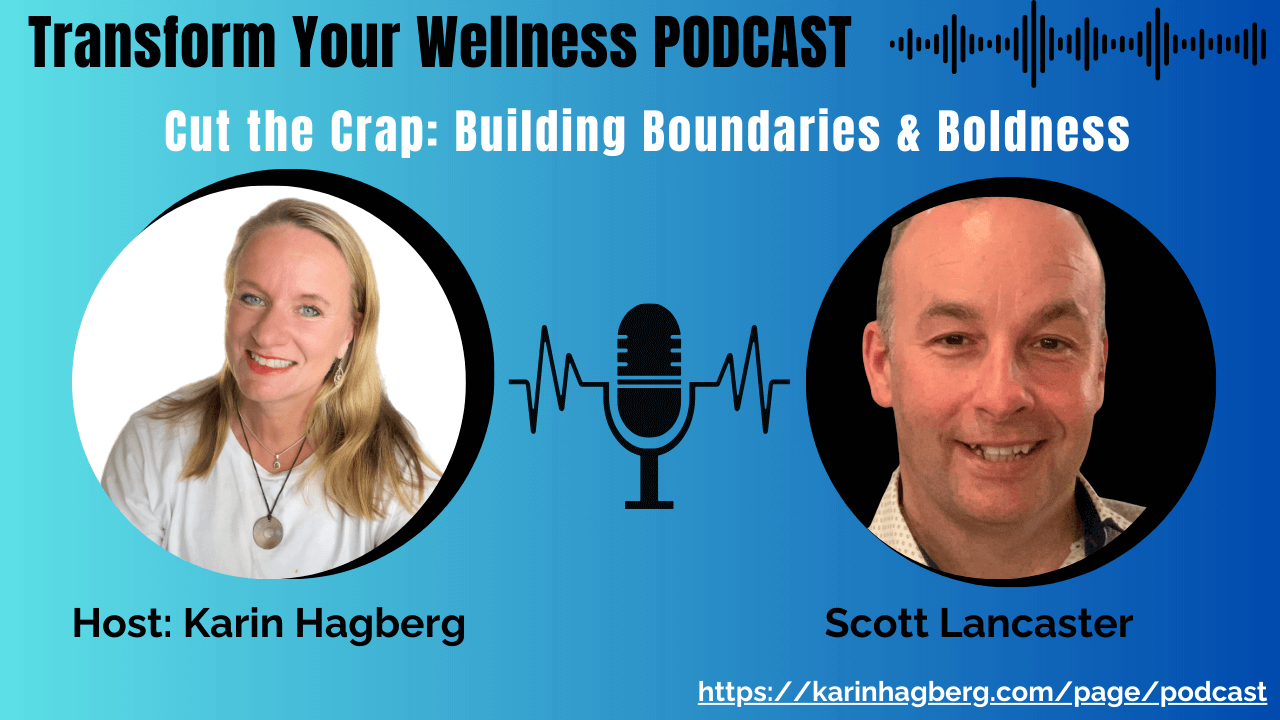
Embrace the powerful journey of awakening as a true Warrioress with the mantra: "Strong in Body. Fierce in Spirit. Worthy in Soul." This transformative path begins by redefining strength, not as a measure of appearance, but as the resilience and vitality that energize your every move and decision. Move beyond mere survival to thrive with a spirit emboldened by courage, speaking your truth and turning adversity into opportunity. At the core of it all lies the sacred understanding of your inherent worthiness, a truth to remember rather than achieve, leading to self-acceptance and empowerment. Discover how intertwining these elements brings a profound alignment to your life, encouraging reflection and personal growth. Awaken to your own potential and step confidently into your true essence, where you are already whole and divine. Join this inspiring journey to reclaim your authentic self and rise as the empowered woman you are meant to be.
Read more...

Scott’s work is direct, raw, and honest — but it’s also deeply compassionate. He speaks to women about boundaries, confidence, and self-worth in a way that cuts through the noise and gets right to the heart of what holds us back.
And let me tell you, this conversation left me reflecting deeply on my own journey — and the journeys of so many women I work with.
Why Women Struggle With Boundaries
Let’s be honest. Most women were not taught how to set healthy boundaries.
We were conditioned to:
- Say “yes” when we mean “no.”
- Put others’ needs before our own.
- Believe that our worth is tied to what we do and how much we give.
But the truth is, when we live without boundaries, we lose ourselves.
We end up drained, resentful, exhausted, and often invisible in our own lives. We give and give until there’s nothing left, and then wonder why we feel so disconnected from who we truly are.
We were conditioned to:
- Say “yes” when we mean “no.”
- Put others’ needs before our own.
- Believe that our worth is tied to what we do and how much we give.
But the truth is, when we live without boundaries, we lose ourselves.
We end up drained, resentful, exhausted, and often invisible in our own lives. We give and give until there’s nothing left, and then wonder why we feel so disconnected from who we truly are.
What Happens When We Lack Boundaries
Scott and I talked about how life feels when we’re living without clear boundaries. It shows up in so many ways:
✨ Energy leaks – always giving, rarely receiving.
✨ Lack of clarity – confusion about who we are and what we stand for.
✨ Disempowerment – living by other people’s rules and expectations instead of our truth.
✨ Resentment – frustration with others, but deep down, frustration with ourselves for not standing tall.
And here’s the thing: when we don’t have boundaries, we send the world a silent message that we don’t believe in our own worth.
✨ Energy leaks – always giving, rarely receiving.
✨ Lack of clarity – confusion about who we are and what we stand for.
✨ Disempowerment – living by other people’s rules and expectations instead of our truth.
✨ Resentment – frustration with others, but deep down, frustration with ourselves for not standing tall.
And here’s the thing: when we don’t have boundaries, we send the world a silent message that we don’t believe in our own worth.
The Transformation of Boundaries
But oh, the magic that happens when we finally claim our boundaries!
Boundaries are not walls. They’re not selfish. They’re not about shutting people out.
They are sacred lines that say: “This is who I am. This is what I value. This is how I honor myself.”
When we set them with love, everything changes:
💎 Confidence grows — because we’re finally standing in alignment with ourselves.
💎 Self-respect deepens — because we’re honoring our own needs instead of betraying them.
💎 Relationships transform — because we start attracting those who respect our worth and letting go of those who don’t.
Scott reminded me that true confidence doesn’t come from perfection, external validation, or doing more. It comes from being rooted in self-worth and living in alignment with our boundaries.
Boundaries are not walls. They’re not selfish. They’re not about shutting people out.
They are sacred lines that say: “This is who I am. This is what I value. This is how I honor myself.”
When we set them with love, everything changes:
💎 Confidence grows — because we’re finally standing in alignment with ourselves.
💎 Self-respect deepens — because we’re honoring our own needs instead of betraying them.
💎 Relationships transform — because we start attracting those who respect our worth and letting go of those who don’t.
Scott reminded me that true confidence doesn’t come from perfection, external validation, or doing more. It comes from being rooted in self-worth and living in alignment with our boundaries.
My Warrioress Reflection
As women, when we learn to set boundaries, we reclaim our power.
We move from depletion into empowerment.
We stop apologizing for who we are.
We rise into our fierce spirit while honoring the softness of our soul.
This is the Warrioress way. Strong in body. Fierce in spirit. Worthy in soul.
Boundaries are the bridge that allows us to live from that place — fully, unapologetically, and authentically.
We move from depletion into empowerment.
We stop apologizing for who we are.
We rise into our fierce spirit while honoring the softness of our soul.
This is the Warrioress way. Strong in body. Fierce in spirit. Worthy in soul.
Boundaries are the bridge that allows us to live from that place — fully, unapologetically, and authentically.
A Reflection for You
I invite you to pause for a moment and reflect:
- Where in my life do I need stronger boundaries to honour my self-worth?
- Where am I still saying “yes” when I truly mean “no”?
- How would my confidence and energy shift if I honored myself first?
Take a moment to journal on this, or even speak it aloud. You may be surprised at how much clarity arrives when you simply give yourself permission to choose you.
- Where in my life do I need stronger boundaries to honour my self-worth?
- Where am I still saying “yes” when I truly mean “no”?
- How would my confidence and energy shift if I honored myself first?
Take a moment to journal on this, or even speak it aloud. You may be surprised at how much clarity arrives when you simply give yourself permission to choose you.
🎧 Listen to the Full Conversation
This blog was inspired by my conversation with Scott Lancaster on the Transform Your Wellness Podcast.
If this message resonated with you, I encourage you to listen to the full episode — because we go so much deeper into the practical ways women can reclaim their self-worth and embody confidence through boundaries.
If this message resonated with you, I encourage you to listen to the full episode — because we go so much deeper into the practical ways women can reclaim their self-worth and embody confidence through boundaries.
Transform Your Wellness Podcast: Cut the Crap: Building Boundaries & Boldness
Remember, Warrioress: You are not here to be everything for everyone. You are here to stand in your truth, honor your worth, and live in fierce alignment with your soul.

Dive into the transformative power of coherence, a state where body, mind, and spirit harmonize, creating profound balance and clarity. Discover how coherent living impacts your wellness on every level, bringing resilience, focus, and a deep sense of peace that encourages thriving rather than just surviving. Through simple practices like breathwork, gratitude, and connecting with nature, learn how to embody this harmony in daily life, moving away from chaos and toward a centered, vibrant existence. Imagine a life where stress melts away, creativity flows effortlessly, and you stand strong, guided by inner wisdom and tranquility. As you journey through these insights, consider how adopting this harmonious state could illuminate your path to being the best version of yourself. Embrace the empowering path of the Awaken Wellness Warrioress and unlock the true essence of who you are.
Read more...
Discover the incredible power of the vagus nerve, the mind-body connector that bridges the gap between your brain and vital bodily functions. As the longest cranial nerve, it plays a crucial role in activating the parasympathetic nervous system, promoting rest, digestion, and healing. By enhancing what is known as "vagal tone," you can improve resilience, health, and emotional well-being. Dive into practical techniques for strengthening this essential nerve, from the simplicity of deep breathing to the joy of social connections. Transform your well-being by exploring the profound influence of the vagus nerve on mental health, inflammation, and even spiritual connection. Discover how this remarkable pathway can lead you to greater calm, vitality, and presence.
Read more...
Embrace the moment when you stop seeking permission to be yourself and instead celebrate your unique essence. Imagine standing tall in your truth, unapologetically inviting the world to witness your multifaceted spirit — whether as the practical Virgo, the dreamy Piscean, or the fiery Scorpio. This is not just a personal declaration; it’s a call to awaken your inner strength and unleash the wisdom nestled deep within your soul. As you journey through this empowering path, recognize that your light is an intrinsic part of a greater collective, urging you to honor the miracle of who you truly are. What transformation awaits when you proudly declare, "This is me"? Join in this soulful revelation and discover the unstoppable force of unity and light within us all.
Read more...













